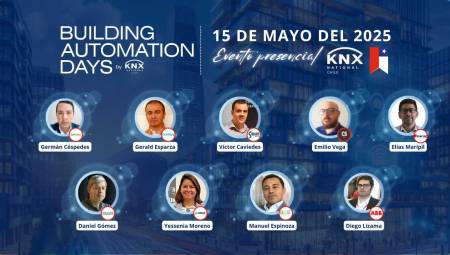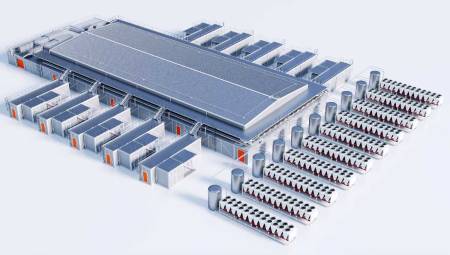 Starting from the natural relationship of Latin America with Spain, AVI LATINOAMÉRICA publishes a brief account of the development of digital signage in the "mother country". There are elements that Latinos can take advantage of to improve.
Starting from the natural relationship of Latin America with Spain, AVI LATINOAMÉRICA publishes a brief account of the development of digital signage in the "mother country". There are elements that Latinos can take advantage of to improve.By: Julián Arcila
Digital signage, or digital signage, is one of the most talked about sectors in the audio and video industry. However, addressing this niche is somewhat confusing and does not end up being well understood what it refers to properly: hardware, software, content, connectivity, among others.
Each of the branches mentioned above is only one link in the chain of what is considered the advertising and information medium of the moment, and even of the future. However, it is important to note that this is a niche dominated mainly by hardware and software, which has made it the technicians and engineers who dominate it. Content generation is still a developing sector, which has meant that marketing, communications and advertising companies are still halfway there.
A digital signage system can be understood as a solution that offers content -commercial, institutional or informative-, disseminates them through digital networks and presents them through state-of-the-art means: LCD screens, Plasma and even LED. All this must be supported by a study, both of the image of the client and its public, and of an organized program of control of execution times and project management.
In Spain, this is an industry that has been developing significantly since the late 90s (despite the current economic crisis). This market has similarities and differences with Latin America, which is why Roi Iglesias*, an expert in the field, was invited to analyze some realities and see if there is something that can be capitalized for Latin America.
Transport and trade: always at the forefront
In Spain, as in almost the whole world, digital signage has been driven by sectors such as transport and commerce.
According to Iglesias, "it began (digital signage) in the late 90s with some channels in metro stations, airports and shopping centers. From the beginning it was conceived as a television in public places, so the contents developed were programs and blocks of news in television format. The channels that emerged with an advertising model appeared mainly in shopping centers, although the initial business model was not well planned, since it was based on the "everything free" for the client, and the medium did not have enough coverage and effectiveness data for advertisers to bet on it. Similarly, the contents were not given special attention."
The sector as such faced several difficulties, among which it can be mentioned that the strong initial orientation to hardware made this an unprofitable business, since the equipment was expensive and the contents and the monetary benefit obtained was meager. For its part, the software for these applications emerged around 1998, although they were only conceived as such years later.
Currently, says Iglesias, citing data from Posterscope Iberia, in Spain there are 12,000 screens dedicated to digital advertising signage , and about 20,000 screens that belong to corporate channels (owned by distribution companies, retail or with points of sale).
At this point, Iglesias was consulted on the differences between the Spanish market with the European, American and Latin American markets. " Digital signage in Spain, despite the current economic situation, is in a moment of growth. In any case, European countries such as the United Kingdom or Germany record screen installation data three times higher than ours (...) In the United States, the sector is at a time of maturity in which hardware and software solutions have been fully tested and have been operating for years. In the same way, the development of advertising management and specific digital signage content are superior to what we can see in Spain".
On Latin America, he said that the companies have the experience of the projects developed in the United States and in Europe, and have imported solutions that have been operating in the market for years. "A more pronounced explosion is expected than what has been seen in Europe although, from what I have contrasted with some companies with which I have established contact, I believe that more companies specialized in digital signage must still appear and that can offer all the necessary phases to implement successful channels. "
With all the above, the forecast in Spain is to double the figures of advertising and corporate channels. To achieve this, they will use a great help: since mid-2009 the DooH Business Climate Index has been launched, an economic index of the digital signage sector in the main European countries that will indicate quarterly the situation of the industry and future forecasts.
Another important element that can be seen in the Spanish market is that 90% of the weight of the sector falls on hardware and software, elements that have good performance and acceptance. However, there is still not much strength of content developers, which is why this can be considered a failure of the sector, because they do not create very good materials oriented towards the public. "Once we have advanced in these two fields we will need to incorporate audience measurement systems, such as those developed by OVAB (Out-of-Home Video Advertising Bureau), which allow us to offer uniform audience data to advertisers and media centers," says the expert.
The vision of marketing
In general, AVI LATINOAMÉRICA collects opinions and offers information inclined to discuss new trends in technology, but rarely offers arguments to boost sales to end users. Having had an interview with a marketing consultant really provides valuable elements for the moment in which one of your clients questions you about the importance or effectiveness of implementing one of these systems.
The advantages of digital signage -in the opinion of Iglesias- can be summarized in two aspects: opportunity and direction. The first ensures that the right content is delivered at the right time, the second seeks to reach exactly the target audience of a message. These two elements make it a fairly useful solution for advertisers in today's media landscape. According to Iglesias, those who have obtained the greatest benefit from these systems are the corporate channels, since in addition to reinforcing the brand of the retailer itself (retailer), it has allowed it to increase sales of some advertised products, as well as offer better and more information to its audience in stores.
On the current needs of customers, the expert commented that "the client needs a single interlocutor who masters all the phases of digital signage. We try to develop this activity (so far with good results), since it is the best way to guarantee that the implemented channel contemplates all the options and incorporates the appropriate technology to the type of client and the environment in which it will be visualized. The work of project management is essential to integrate the best hardware, the appropriate software , the specific contents and the advertising or return on investment management".
Therefore, if your company has been offering digital signage solutions, only when it comes to the supply of equipment and connectivity, do not rule out trying to have general control over the process. Therefore, from the point of view of marketing (for the end user) it is recommended that before implementing a system of this type, the marketing policy is well defined, as well as the objectives of the project; the current image of the client is analyzed -this is more of the area of communication, so you can consult with an expert in advertising-; study the public and their habits at the point of purchase; gather the appropriate hardware options for that space; compare the software solutions that will allow to send the contents and especially the content management.
All this must be supported on an audience measurement system to know the amount of audience that has seen the channel, exposure time, as well as the effectiveness of the advertising content broadcast.
Latin America is a niche with a future
Gone are those years when Latin Americans were left with their mouths open when talking about technology. The assumption of the Internet as a massive means of information exchange made it possible for the region to link up with the global information village. In terms of technology, this is no exception and today it is possible to find in the region the most exclusive solutions that years ago were typical of the most developed markets.
Roi Iglesias has been able to establish contact with several professionals in the region and has found quite remarkable facts. On the one hand, there is a growing interest in developing digital signage in a professional way. The countries that stand out for now are Argentina, Venezuela, Chile, Colombia and Brazil, the latter having a great possibility, as companies have begun to become aware of the sector and are looking for forums to learn and publicize various applications.
Of the other countries, Iglesias commented that "I have observed a clear focus on content production and software, since a large part of the companies with which I have contacted were interested in programs, audience measurement and hardware, having an important content production team. These are countries in which digital signage is growing rapidly with respect to Spain, although the work of project management and preparation in areas such as specific advertising management of digital signage is still lacking. As in Spain, most professionals come from technical or engineering branches, although in Latin America there is a greater number of creatives interested in developing content for these networks".
He commented that the economic sectors that in his opinion are leading the use of digital signage as a method of promotion are shopping centers, fashion stores, supermarkets, outdoor advertising applications, among others, although what he noted is that there does not seem to be an extended development to most of the companies in a given sector. Roi emphasized the great disadvantage of Latin America compared to Spain in terms of fairs and congresses specialized in these topics.
Finally, and by way of analysis, Iglesias recommended that before any project the necessary time be allocated to understand what is intended with it. He pointed out saying that "the main thing is to know what will be the strong point of the company (its specialty) and from there seek alliances with companies that cover the rest of the pillars necessary for the development of effective networks. For example, if that company develops content, it should establish an alliance with some content management, programming and distribution software, with hardware companies with different solutions adaptable to different environments and sectors; and finally, with some audience measurement system that allows you to know the success or failure of your content".
At all times he recommended paying due attention to the work of project management, as it is fundamental throughout the process.
* Roi Iglesias has a degree in Advertising and Public Relations from the University of Navarra. Blogger in Digital Signage Creative, blog of opinion and analysis on the digital signage sector, initiatives, effectiveness, new solutions and projects. He is part of the advisory board of OVAB Europe DBCI and the Digital Signage Promotion Committee of Viscom Sign. Marketing manager of Altabox, a company specialized in Project Management of digital signage projects. You can be contacted at [email protected]














